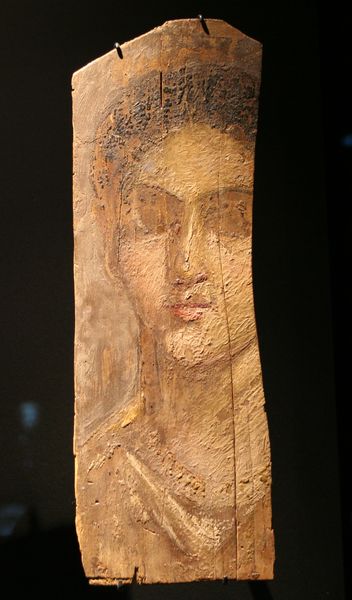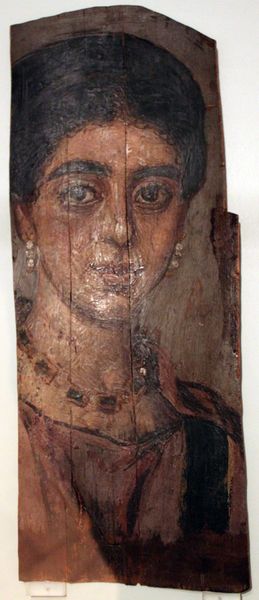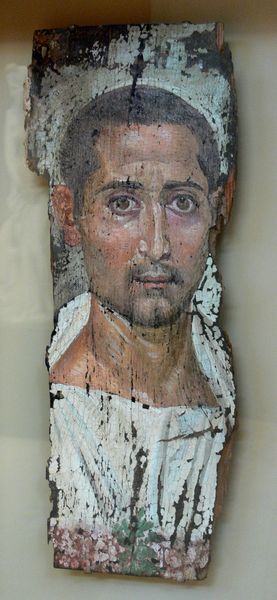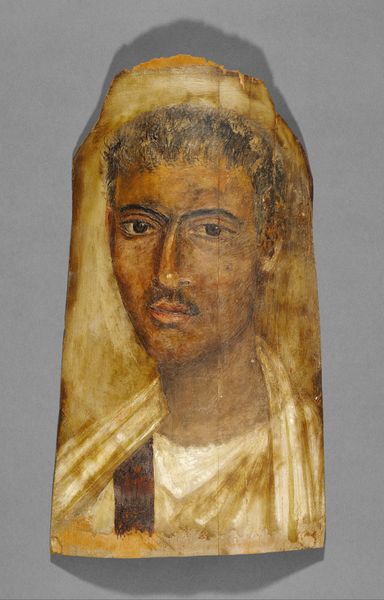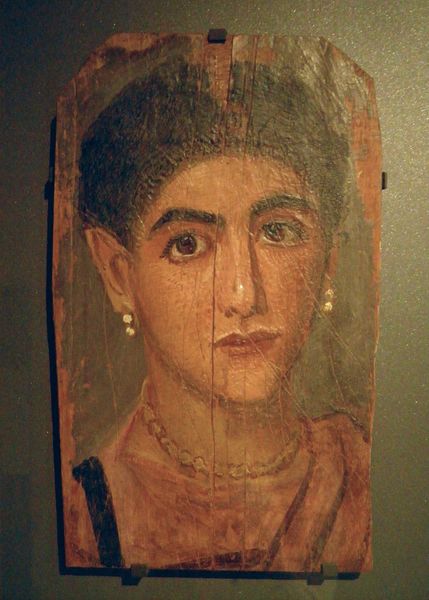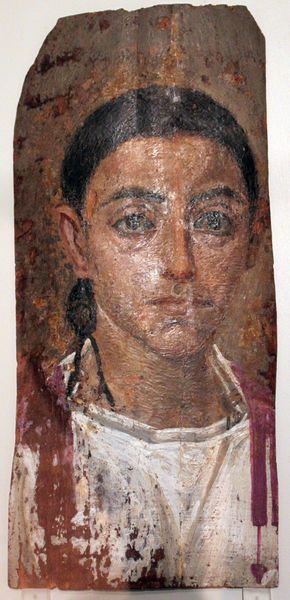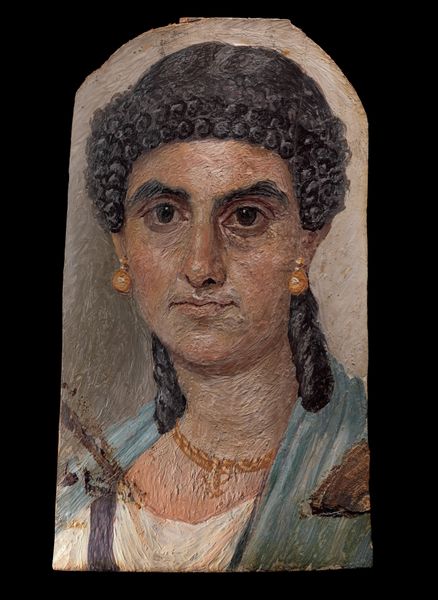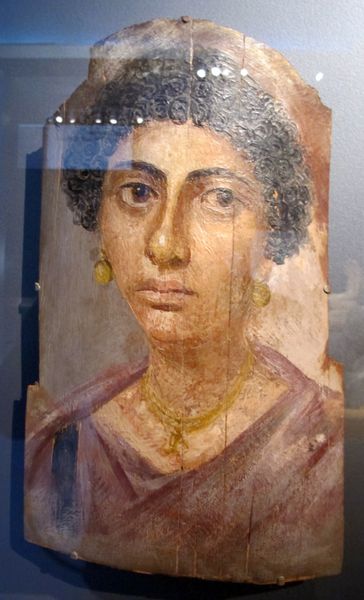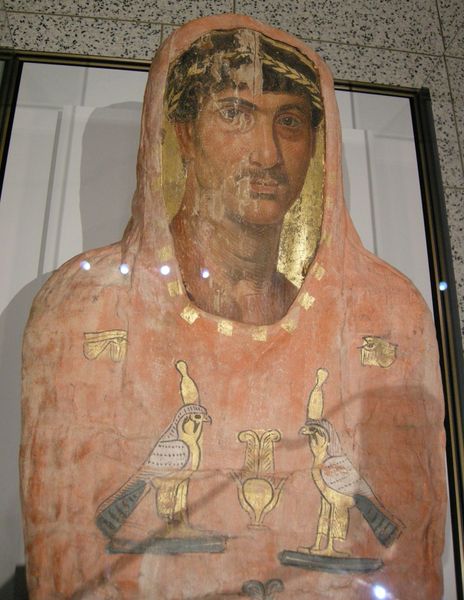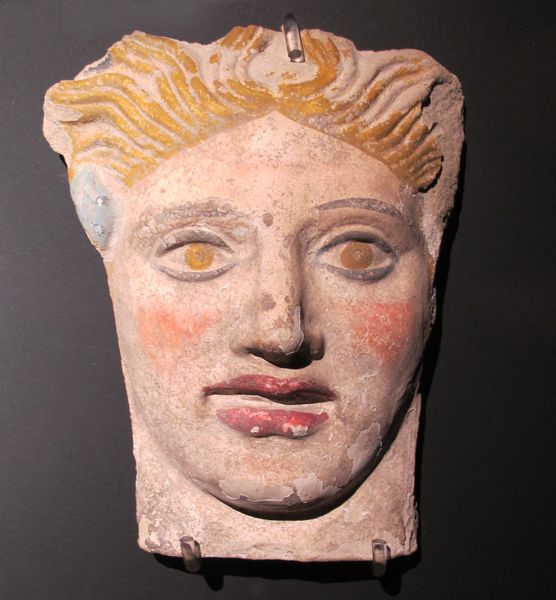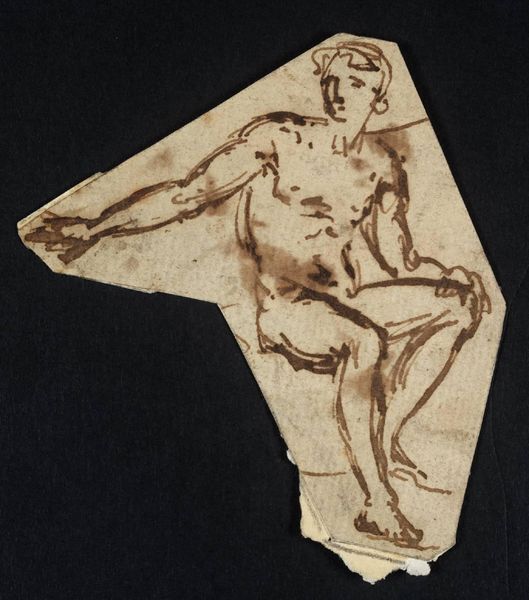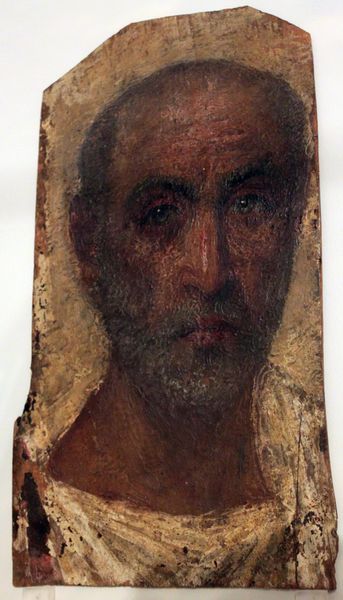
tempera, painting
#
portrait
#
tempera
#
painting
#
ancient-egyptian-art
#
oil painting
#
ancient-mediterranean
#
portrait art
#
watercolor
#
realism
Copyright: Public domain
Curator: This tempera on wood painting is titled “Mummy Portrait of a Boy.” Though the exact date of its creation remains unknown, works like it offer a glimpse into art from ancient Egypt. Editor: The first thing that strikes me is its vulnerability. The wood is so damaged, the paint chipped, yet that young face retains such a piercing, gentle gaze across millennia. Curator: Yes, the gaze is important. These portraits weren’t merely decorative; they served a deeply symbolic function. Attached to mummies, they were intended to represent the deceased in the afterlife, facilitating recognition. Editor: Which raises questions of identity, doesn’t it? This fusion of Egyptian burial practices with a Roman artistic style. It highlights how power structures impacted representation in that historical moment. Who commissioned this? Who could afford to preserve their image in such a manner? Curator: Precisely. There's a cultural layering here. Consider the wreath he wears; it's suggestive of Roman influence, yet the purpose of the portrait aligns with core Egyptian beliefs about the soul’s journey and earthly continuity. It signifies not just earthly status but spiritual transition. Editor: I'm also curious about the artistic process itself. Tempera demanded speed and precision. Imagine the skill required to capture such a lifelike image using these ancient techniques. Curator: Indeed. And notice how the damage, while initially jarring, almost enhances the work. That absence on the forehead adds to the solemnity; like a third eye losing its vision over time. Editor: Agreed. It invites us to contemplate not just the subject’s life, but the painting's own journey through history. It carries within its fragmented form narratives of loss, remembrance, and survival, a stark reminder that even the most meticulously preserved symbols can’t escape the weight of time. Curator: A poignant thought. Looking at his expression, and tracing his image from across all this time, I now also feel grateful that images such as this boy were once thought important enough to persevere. Editor: I concur. Its beauty is deepened knowing that we now remember him not only because someone wanted him immortalized, but because it brings forward a story about how we reckon with representation in order to face mortality.
Comments
No comments
Be the first to comment and join the conversation on the ultimate creative platform.
